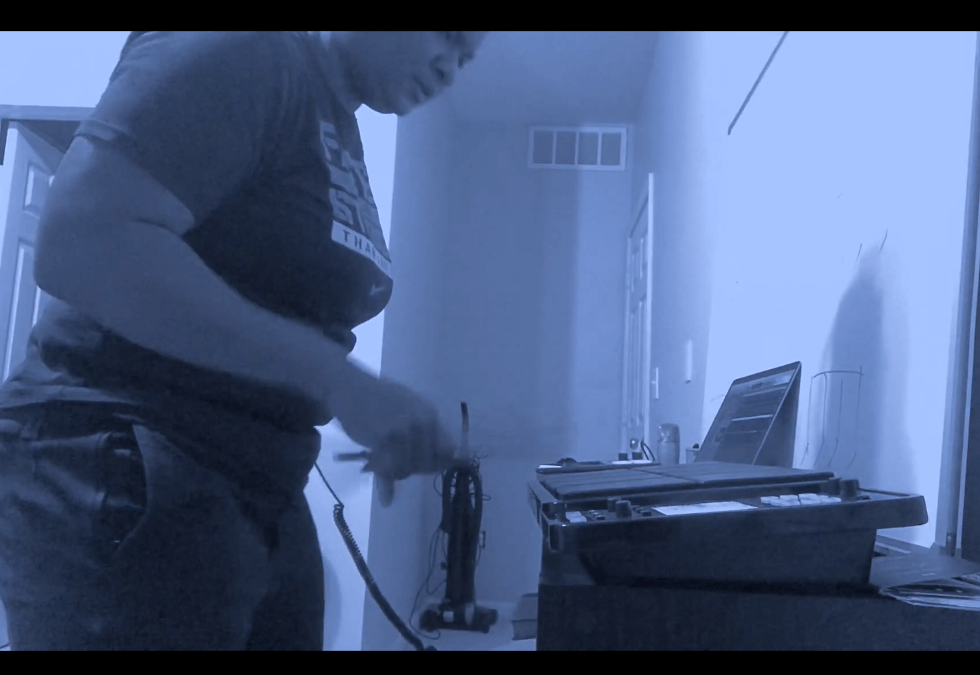
Percussionist and Dance Department Music Coordinator (MGSA alum, DMA 2016) Mesia Austin serves as an accompanist, providing improvised music, on the spot, for MGSA Modern Dance Technique classes. In some ways, Austin must function as a musical chameleon. “We could play for to six or seven different instructors per week,” Austin says. “The instructor’s movement, goals for the class, and background dictates the style we should pull from.”
Austin hasn’t missed a beat during the quarantine. Here, she discusses how she pulls it all together from her family home in Georgia to accompany dance students scattered across the country.
How do you usually contribute to dance classes—and how do you function in your role now that the classes are happening online?
I observe the class and create improvised music based on movement of dancers and cues from the instructor. I work closely with the teacher as they communicate aspects they wish to highlight such as rhythm, tempo, or mood. Over the past several weeks, I have been creating music based on different feels and time signatures. While creating, I’ve tried to make a variety of options that can be used in many different ways.
How do you choose the music? What do you want to contribute to the dancers’ experience?
Sometimes I give myself a set of parameters to work within that drives the creativity. For example, I will choose a tempo and a time signature. Once those are selected, I am able to imagine the movement and translate that into a creative sound score. I just try to be as creative as possible…. I use rhythms and grooves that I know will fit common dance practices.
How does this goal differ from creating music for yourself?
Creating music for myself is very different: I receive a piece of music, perfect it as much as possible, and then execute in performance. Creating for dance means…well…being extremely attentive and responsive to what you see, hear, and feel in the room and being open to objective creation together. It’s all being developed in real time.
What is interesting/challenging?
I do enjoy being an accompanist. It’s very different from orchestral percussion. But when I am playing in an orchestra, we have to take physical cues from a conductor…. We can watch a wind player take a breath and predict when the sound will come out and what it will sound like based on how the player moves. This is one skill that translates very well. It helps with dance, because you can watch the movement of the dancers and predict what sounds/rhythms should accompany that particular movement. I love watching and creating based on what I see. I think that’s pretty cool.
Why is it important to you, during this challenging time, to make sure that the students are served with your music?
It’s important for us all to continue to create music for our students to help them continue to excel. This helps the students to maintain a sense of normalcy. It’s great to be able to still service the dancers with creative improv music and do whatever possible to inspire a teacher or a dancer’s movement. Also, as it relates to mental health, I feel it’s important to keep a stable routine for the dancers and for ourselves. I know personally, having the opportunity to create allows me to focus and deal with the new way we conduct our jobs. This time has allowed me to concentrate, develop good practice habits, and is a healthy way to pass time. I am hoping the students feel the same way. I’m able to release anxieties and emotional stress this time has caused, and this has served as a very good practice and a healthy way to pass time.

